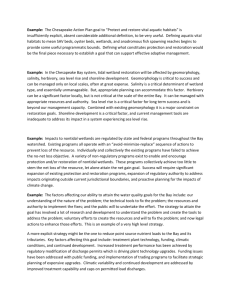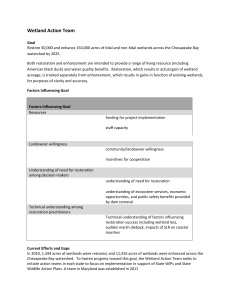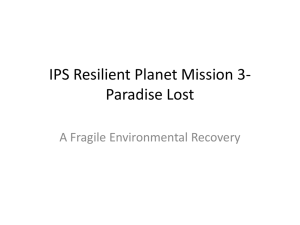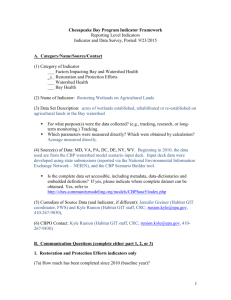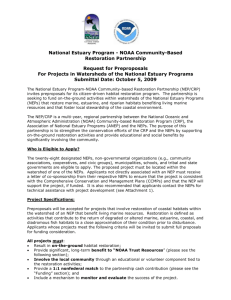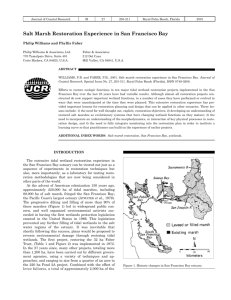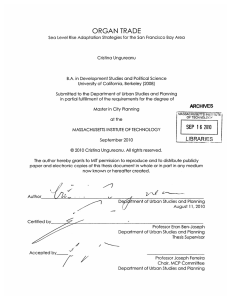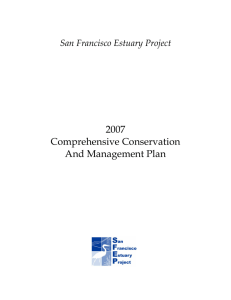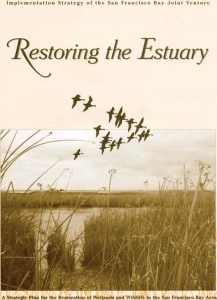Federal Earmarks Template for 2008
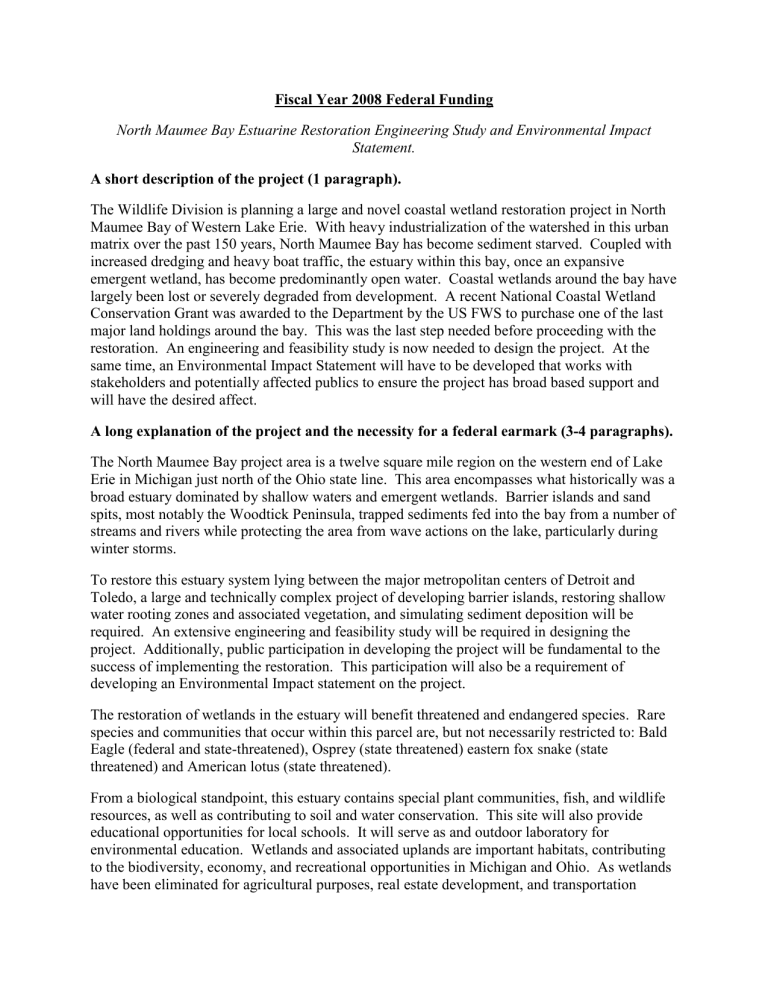
Fiscal Year 2008 Federal Funding
North Maumee Bay Estuarine Restoration Engineering Study and Environmental Impact
Statement.
A short description of the project (1 paragraph).
The Wildlife Division is planning a large and novel coastal wetland restoration project in North
Maumee Bay of Western Lake Erie. With heavy industrialization of the watershed in this urban matrix over the past 150 years, North Maumee Bay has become sediment starved. Coupled with increased dredging and heavy boat traffic, the estuary within this bay, once an expansive emergent wetland, has become predominantly open water. Coastal wetlands around the bay have largely been lost or severely degraded from development. A recent National Coastal Wetland
Conservation Grant was awarded to the Department by the US FWS to purchase one of the last major land holdings around the bay. This was the last step needed before proceeding with the restoration. An engineering and feasibility study is now needed to design the project. At the same time, an Environmental Impact Statement will have to be developed that works with stakeholders and potentially affected publics to ensure the project has broad based support and will have the desired affect.
A long explanation of the project and the necessity for a federal earmark (3-4 paragraphs).
The North Maumee Bay project area is a twelve square mile region on the western end of Lake
Erie in Michigan just north of the Ohio state line. This area encompasses what historically was a broad estuary dominated by shallow waters and emergent wetlands. Barrier islands and sand spits, most notably the Woodtick Peninsula, trapped sediments fed into the bay from a number of streams and rivers while protecting the area from wave actions on the lake, particularly during winter storms.
To restore this estuary system lying between the major metropolitan centers of Detroit and
Toledo, a large and technically complex project of developing barrier islands, restoring shallow water rooting zones and associated vegetation, and simulating sediment deposition will be required. An extensive engineering and feasibility study will be required in designing the project. Additionally, public participation in developing the project will be fundamental to the success of implementing the restoration. This participation will also be a requirement of developing an Environmental Impact statement on the project.
The restoration of wetlands in the estuary will benefit threatened and endangered species. Rare species and communities that occur within this parcel are, but not necessarily restricted to: Bald
Eagle (federal and state-threatened), Osprey (state threatened) eastern fox snake (state threatened) and American lotus (state threatened).
From a biological standpoint, this estuary contains special plant communities, fish, and wildlife resources, as well as contributing to soil and water conservation. This site will also provide educational opportunities for local schools. It will serve as and outdoor laboratory for environmental education. Wetlands and associated uplands are important habitats, contributing to the biodiversity, economy, and recreational opportunities in Michigan and Ohio. As wetlands have been eliminated for agricultural purposes, real estate development, and transportation
needs, the wetlands remaining have become increasingly important to wildlife, fish, and human needs. Although this proposal is not specifically requesting funds for education and outreach efforts, they will be part of the project and the future wetlands restoration projects within the bay
How much funding would be requested in FY 08 (include a short budget summary).
A total of $500,000 is being requested to fund the following activities:
Project Component
Engineering Design and Feasibility Study
Public Input and Stakeholder Participation Meetings
Environmental Impact Statement including:
National Historic Preservation Act compliance
Section 7 consultations for Endangered Species Act compliance
Executive Order on Wetlands Protection compliance
Executive Order on Floodplains Protection compliance
Amount
$250,000
$50,000
$200,000
Totals: $500,000
Whether the project has received Congressional Earmarks funding previously.
No.
Whether your Department is seeking other sources of funding for this project (source amount requested).
The Department is not seeking other funding sources for the engineering study and environmental impact statement. The Department was successful, however, in securing a
National Coastal Wetland Conservation Grant to purchase one of the last major large privately owned parcels bordering the bay. This acquisition is an important catalyst for the estuary restoration as the bottomlands of the lake in this area were patented out to the riparian landowners. Controlling the surrounding riparian lands is important to lessen demand for conflicting uses of the bay, particularly recreational boating. The NCWC grant was only the first of many funding initiatives that will be necessary to see this project through its ambitious completion.
NOTE: If you are resubmitting a project requested in FY07, please update the status of the project, whether you are seeking more funds in FY08, how much funding you are requesting, and if there are any changes to the projects.
This is not a resubmission of a previously requested project.


